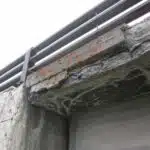As a carpentry expert, building porch steps is one of the most common projects that clients request. Whether it is to upgrade an existing porch or add a new entrance to their home, porch steps serve as both a functional and aesthetic feature that can increase the value of a property. However, building porch steps requires careful planning and execution to ensure safety and durability.
In this article, we will explore the step-by-step process of building porch steps. From measuring the dimensions and selecting materials to constructing the frame and adding finishing touches, we will provide detailed instructions for each stage of the project. By following these guidelines, you will be able to build sturdy and beautiful porch steps that will enhance your home’s curb appeal while also serving as a safe entryway for you and your guests.
Assessing Your Porch Area
Assessing your porch area is the first step in building porch steps. Before starting, make sure that the porch area is level and stable. A level surface is necessary to prevent any accidents or injuries caused by an unsteady platform. Safety considerations should always be a top priority when it comes to building structures.
It is also important to take note of the size of the porch area. Measure the width and length of the space available for your steps. This information will help determine how many steps you will need to build, as well as their size and height. Additionally, consider the weight capacity of your steps. Will they be able to support heavy foot traffic? Is there enough space for people to move comfortably up and down the steps?
Assessing your porch area requires careful evaluation to ensure safety and functionality. Once you have determined that your porch area is level and stable, measured its dimensions, and considered safety factors such as weight capacity, it’s time to move on to determining the number of steps needed.
Determining The Number Of Steps Needed
Accurately measuring the area where the porch steps will be constructed is an essential first step. Slope should be taken into account when determining the number of steps needed, as well as the desired rise of each stair. The rise of each stair is measured in inches, with a typical range between 6 and 8 inches. Additionally, the depth of each stair should be between 10 and 12 inches to accommodate a comfortable step. It is important to ensure that the total rise of the stairs is evenly divided among the risers to provide a uniform look. Finally, the number of steps is determined by dividing the total rise by the desired riser height.
Measurement
When it comes to building porch steps, proper measurement is crucial in ensuring safety and functionality. As a carpenter, it is important to understand the best practices for determining the number of steps needed for a specific porch. Common mistakes such as miscalculating the height and depth of each step can lead to uneven and dangerous steps.
To start, measure the total height from the ground to the top of the porch landing. Divide this number by the preferred height of each step, usually around 7 inches, to determine the total number of steps needed. It is important to note that each step should have a consistent height and depth for optimal safety.
One best practice is to use a level or straight edge to ensure accuracy when measuring both height and depth. Additionally, using a framing square can help in creating precise corners for each step. By taking these precautions and carefully measuring each element, you can confidently build porch steps that will provide both functionality and safety for years to come.
Slope
When determining the number of steps needed for a porch, another crucial factor to consider is the slope. The slope of the porch can greatly impact the number and size of steps required for safe and functional access. As a carpenter, it is important to understand how to measure and adjust for slope when building porch steps.
To start, measure the horizontal distance from where the steps will begin to where they will end at the top of the landing. Then, measure the vertical rise from ground level to the top of the landing. The slope can be calculated by dividing the vertical rise by the horizontal distance. This measurement will help determine if additional steps or adjustments in step height are necessary.
Choosing materials that can withstand potential weather damage and installing railings can add an extra layer of safety when accounting for slope. Additionally, it is important to ensure that each step is level and securely anchored to prevent slipping or shifting. By properly measuring and adjusting for slope, you can confidently build porch steps that are both safe and functional for all who use them.
Risers
When building porch steps, determining the number of steps needed is not the only consideration. The height and depth of each step, or the riser and tread, are also important factors to ensure safe and comfortable use. As a carpenter, it is essential to understand how to measure and adjust for risers when designing porch steps.
Risers refer to the vertical height between each step. A standard riser height is around 7 inches, while a standard tread depth is around 11 inches. However, these measurements can vary based on individual needs or local building codes. Additionally, painting risers with contrasting colors can help individuals with visual impairments better navigate the steps. Alternative materials such as composite decking or brick can also be used for added durability.
It is crucial to ensure that each step has a consistent rise and that all risers are level with one another. Uneven rises can cause tripping hazards and make using the porch steps uncomfortable or dangerous. By properly measuring and adjusting for risers in addition to slope when building porch steps, you can create a secure and functional entrance that will serve your clients for years to come.
Measuring The Dimensions Of Each Step
After determining the number of steps needed, the next step in building porch steps is measuring the dimensions of each step. Measuring accuracy is crucial to ensure that your steps are level and safe for use. It is important to note that if your porch has a slope, you will need to adjust the measurements accordingly.
When measuring each step’s dimensions, it is essential to choose appropriate step depth and height. The depth should be at least 10 inches, while the height should not exceed 7 inches. This measurement ensures that your steps are comfortable and safe for use. You can adjust these measurements slightly according to your preferences, but it is crucial not to deviate too much from them.
To ensure accuracy when measuring the dimensions of each step, make sure you measure twice before cutting once. Double-checking your measurements minimizes errors and ensures that you have all the materials ready before starting construction. After taking all necessary measurements and adjusting for sloping porches, proceed to select materials for building your porch steps.
Selecting Materials
- When selecting materials for the construction of porch steps, there are important factors to consider such as type of material, cost, and durability.
- Common materials used for the construction of porch steps are stone, brick, concrete, and wood.
- The cost of materials will vary depending upon the type of material that is selected.
- To ensure long-term durability, materials should be chosen based on the local climate and the intended use of the porch steps.
- Wood, while often more expensive than other materials, is a popular choice due to its versatility and range of styles.
- When considering cost, it is important to factor in the cost of maintenance and potential repairs over the lifetime of the porch steps.
Types Of Materials
As a carpenter, selecting the right materials for porch steps is crucial to ensure they are both durable and visually appealing. When considering materials, two popular options are wood and concrete. Wood creates a timeless look that can complement various home styles. However, it requires regular maintenance as it is prone to rotting, termites, and warping over time. On the other hand, concrete provides excellent durability and stability but may not be as aesthetically pleasing as wood.
Another option to consider is natural stone. It offers an elegant and unique appearance that can enhance the overall look of your porch steps. However, using natural stone can be more expensive than other materials and requires skilled labor for installation. Additionally, it may not be as slip-resistant as other options.
When comparing wood, concrete, and natural stone for porch steps, there are pros and cons to each material. It’s important to weigh these factors when making a decision based on your budget, style preference, and long-term maintenance needs. Ultimately, selecting the best material depends on your personal needs and preferences.
In conclusion, choosing the right material for porch steps involves careful consideration of various factors such as cost-effectiveness, durability, aesthetics appeal among others while weighing out pros versus cons for each type of material available in the market today. As a carpenter or any handy person looking forward to serving others with this skill set expertise in building porch steps with different types of materials is essential information to have at their fingertips.
Cost Considerations
When selecting materials for porch steps, cost considerations should not be overlooked. Budget planning is crucial to ensure that the project remains within financial constraints without sacrificing quality and durability. While wood, concrete, and natural stone are popular options for porch steps, there are alternative materials that can provide cost savings.
One alternative material is composite decking. It is made from a mixture of wood fibers and plastic, providing the look of wood with added durability and resistance to rotting and insects. Composite decking also requires minimal maintenance, making it a cost-effective choice in the long term. Another option is pressure-treated lumber, which is chemically treated to resist decay and insects at a lower cost than other types of wood. However, it may not have the same aesthetic appeal as other materials.
Overall, it’s important to weigh the pros and cons of each material while considering budget constraints. By exploring alternative materials such as composite decking or pressure-treated lumber, carpenters can provide their clients with durable and visually appealing porch steps without breaking the bank. This approach ensures that projects remain affordable while meeting the needs and preferences of clients.
Durability
Selecting durable materials is crucial when designing porch steps. As a carpenter, it’s important to consider the lifespan of the material used as it directly impacts the maintenance requirements and overall cost-effectiveness of the project. While some design options may appear aesthetically pleasing, they may not be able to withstand harsh weather conditions or heavy foot traffic.
When selecting materials for porch steps, it’s essential to look beyond appearance and prioritize durability. Natural stone, concrete, and brick are popular options that provide excellent durability but may require regular maintenance to prevent cracking. On the other hand, composite decking and pressure-treated lumber are alternatives that offer both durability and low-maintenance requirements.
Maintenance tips should also be taken into consideration when selecting materials for porch steps. Regular cleaning and sealing can prolong the lifespan of natural stone, concrete, and brick while preventing slips and falls on wet surfaces. Composite decking requires minimal maintenance but can still benefit from occasional cleaning with mild soap and water. Pressure-treated lumber may require resealing every few years to maintain its resistance to rotting and insects.
By prioritizing durability in material selection and following proper maintenance tips, carpenters can create porch steps that are both functional and cost-effective in the long term. It’s important to weigh design options against durability needs while keeping maintenance requirements in mind to ensure client satisfaction with the final product.
Choosing The Right Tools
Before beginning any construction project, it is essential to have the right tools. Porch steps are no exception. When building porch steps, it is crucial to have both hand and power tools readily available. Hand tools include a hammer, level, tape measure, saw, and chisel. Power tools such as a circular saw and drill will also be necessary.
When using power tools, safety should always be a top priority. It is recommended that you wear safety gear such as ear protection, eye goggles, dust masks, and gloves when operating machinery. Before using power tools for the first time or after an extended period of disuse, be sure to read the manufacturer’s instructions carefully. Follow all instructions on proper usage and maintenance of your equipment.
Remember that accidents can happen even when all precautions have been taken. In case of an emergency or injury while working with power tools or any other carpentry equipment, seek medical attention immediately.
Transition: Now that we have covered the importance of choosing the right tools and taking safety precautions when working with them let’s move on to the next step in building porch steps- cutting and preparing the lumber.
Cutting And Preparing The Lumber
Before we start building porch steps, it is crucial to understand the different types of lumber that are best suited for this project. Typically, pressure-treated lumber is an ideal choice for outdoor projects as it has been chemically treated to resist rot and decay. Other popular options include cedar and redwood, known for their natural resistance to insects and weather damage. When selecting lumber for your project, make sure you choose pieces that are straight, free of knots, and have a smooth surface.
Cutting and preparing the lumber can be a dangerous task if not done correctly. Safety precautions must be taken when using power tools such as saws and drills. Always wear protective gear such as goggles, gloves, and ear protection to prevent injuries. Before cutting the lumber, measure twice and cut once to avoid wastage of material. Also, make sure that all the pieces are cut according to your plan’s dimensions so that they fit together perfectly.
When constructing porch steps’ foundation, it is essential first to determine the location and size of the steps. The foundation must be levelled; otherwise, the steps will not be stable or safe to use. To create a solid foundation, dig holes at least 3 feet deep at each corner where the steps will sit. Next, add gravel or crushed stone into each hole up until ground level before compacting it with a tamper tool. Finally, place concrete piers in each hole before allowing them time to dry before proceeding with the next step in constructing your porch stairs.
Constructing The Foundation
- Accurately calculating the rise of the porch steps is a critical step in constructing the foundation.
- Before pouring the concrete footers, holes should be dug to the depth and width specified in the building plans.
- When digging the holes, care should be taken to ensure that the sides of the holes remain vertical.
- After the holes have been dug, the footers should be poured and leveled to create a stable base.
- The footers should be allowed to cure before continuing with the construction of the porch steps.
- Careful consideration should be given to the width of the steps and the total rise to ensure that the porch steps are safe and comfortable to use.
Calculating The Rise
Achieving the perfect rise is crucial in constructing a sturdy and safe set of porch steps. Precision is key when calculating the rise, which refers to the height of each step. A common mistake to avoid is not taking into account the overall height of the porch and dividing it evenly among the desired number of steps. This can result in uneven steps that are either too high or too low.
To calculate the rise accurately, measure the distance from the porch floor to ground level and divide it by the number of desired steps. It’s important to note that each step should have a consistent and even rise for safety purposes. The importance of precision cannot be stressed enough, as even a slight miscalculation can lead to a set of steps that are difficult to climb or pose a tripping hazard.
Another common mistake in calculating the rise is failing to take into account any additional features such as handrails or landings. These factors can affect the overall height of each step and must be included in calculations for accuracy. By avoiding these mistakes and ensuring precise measurements, constructing a solid foundation with perfectly calculated rises will create a strong base for your porch steps while also providing safety and comfort for those who use them.
Digging The Foundation Holes
Constructing a sturdy set of porch steps involves several essential steps that must be followed with precision. After calculating the rise, the next step in building the foundation is to dig the foundation holes. It is crucial to dig these holes to the appropriate depth and width, depending on the size and weight requirements of your porch steps. The foundation depth should be sufficient to withstand any external forces that may cause instability or damage over time.
The soil composition is also an important factor to consider when digging the foundation holes. The type of soil can affect how deep and wide you will need to dig, as well as determine whether additional measures such as drainage systems or gravel bases are necessary. For instance, if you have clay soil, it may require deeper excavation than sandy soil due to its tendency to expand and contract in response to moisture levels.
Once you have determined the appropriate measurements for your foundation holes, it’s time to start digging. A professional carpenter would use specialized equipment such as post hole diggers or augers for larger projects. However, it is possible to manually dig using shovels if you have a small project and don’t mind putting in some physical effort. Regardless of how you choose to do it, taking your time and ensuring that each hole is dug uniformly will provide a solid foundation for your porch steps.
Pouring The Concrete Footers
After successfully digging the foundation holes, the next crucial step in constructing a sturdy set of porch steps is pouring the concrete footers. This process involves mixing and pouring concrete into each hole to create a stable base for your porch steps. Concrete mixing is a critical step that requires accurate measurement of cement, sand, and aggregate to ensure that the concrete mixture is strong enough to support the weight of your porch steps.
Before pouring the concrete, it’s essential to place reinforcement in each hole. The reinforcement placement helps to reinforce the concrete and prevent cracking or crumbling over time due to external forces such as weather changes or heavy traffic. Using steel rebar or mesh will provide additional strength and durability to your concrete footers.
Once you have mixed the concrete and placed reinforcement, carefully pour it into each hole until it reaches ground level. It’s crucial to do this uniformly while ensuring that there are no air pockets or voids left in the concrete. After pouring, it’s best to let the concrete cure for at least 48 hours before proceeding with any further construction activities on top of it. With proper execution of these steps, you can be confident that your porch steps will have a stable foundation that will last for years without any issues.
Building The Frame
A sturdy and well-built frame is crucial when building porch steps. Did you know that over 60% of all porch accidents are caused by faulty frames? To ensure safety and longevity, the frame should be constructed with high-quality lumber and securely fastened using galvanized screws or bolts.
Before beginning construction, gather all necessary tools and materials such as a circular saw, drill, measuring tape, level, and treated lumber boards. Here are four key steps in building the frame:
- Measure the height from the ground to the top of the porch landing to determine the number of steps needed.
- Cut two boards for each step’s length, one for the front and one for the back of each step.
- Attach support boards between each step to provide stability.
- Anchor the frame to concrete or wooden posts using lag bolts.
Decorative accents such as handrails or balusters can be added to enhance the aesthetic appeal of your porch steps. Additionally, taking proper maintenance measures such as sealing or painting the frame can help prevent damage from weathering elements like rain or snow. By following these tips, you can ensure that your porch steps not only look great but also last for years to come.
As you move on to installing treads and risers on your newly built porch steps, keep in mind that precise measurements are key in achieving a safe and level surface for walking.
Installing Treads And Risers
Accurate measurements are the foundation for proper tread installation. The treads should be cut from the same type of material, using the same type of saw. Risers should be installed directly beneath each tread before securing them with screws or nails. It is important to ensure that the risers are level and secure before continuing with the project.
Measuring Treads
When it comes to building porch steps, one of the most important aspects is installing treads and risers. It might seem like a straightforward task, but there are some critical points that need to be considered for a safe and functional outcome. Measuring treads is one of these crucial points, as it determines the size and shape of each step. To ensure accuracy and precision, carpenters use different techniques such as calculating angles and proper spacing.
Calculating angles is an essential part of measuring treads since it determines how steep or shallow each step will be. There are different formulas that can be used depending on the design of the porch steps. For example, if you’re working with a straight flight of stairs, the angle should be around 30-35 degrees for optimal safety. On the other hand, if you’re building curved steps, you’ll need to use a more complex formula that takes into account both the radius of the curve and the number of steps needed.
Proper spacing between treads is another critical factor in measuring porch steps. The distance between each tread should be uniform to ensure balance and stability when walking up or down the stairs. Typically, this distance should not exceed 7 ¾ inches or go below 4 inches. To achieve this symmetry, carpenters use tools such as framing squares or stair gauges that help them mark each step’s location precisely.
In conclusion, measuring treads accurately is essential to install functional and safe porch steps. Calculating angles and proper spacing are two critical factors that contribute to achieving precise measurements. As a carpenter/carpentry expert, it’s vital to pay attention to every detail during this process to ensure optimal results for your clients’ satisfaction.
Cutting Treads
After measuring the treads and risers of porch steps, the next critical step is cutting the treads. The treads are the horizontal part of each step where people step on while going up or down a flight of stairs. The process of cutting treads involves using different measuring techniques to ensure accuracy and precision. Safety precautions should also be observed during this process to avoid accidents.
One essential safety precaution when cutting treads is wearing protective gear such as gloves and goggles. These items protect carpenters from getting cuts or debris in their eyes. Another safety measure is ensuring that the saw blade is sharp enough to avoid slipping, which can result in uneven cuts or injuries. To make sure that the tread fits perfectly on top of the riser, it’s crucial to double-check all measurements before making any cuts.
To cut treads accurately, carpenters use tools such as circular saws or jigsaws depending on the project’s design and complexity. They also use framing squares or stair gauges to mark where each cut should be made precisely. Once all markings have been made, they carefully cut along these lines, ensuring that all sides are smooth and straight.
In summary, cutting treads is an integral part of installing porch steps and requires precision and safety measures. Carpenters need to wear protective gear and use sharp blades while checking measurements twice to avoid accidents or errors. The use of precise measuring techniques such as framing squares helps achieve accurate results while using tools such as jigsaws ensures clean cuts for a polished finish.
Adding Handrails
Handrail design is an essential aspect of building porch steps. The handrail provides support and safety to individuals using the stairs, especially those with mobility issues. When designing a handrail, it is crucial to consider the materials used, the height of the stairs, and local building codes. Handrails should be designed in a way that complements the overall look of your porch and home.
Once you have designed your handrail, it’s time to install it. First, measure and mark where the handrail posts will go on each side of the stairs. Use a post hole digger to create holes for the posts and fill them with concrete. Once dry, attach mounting brackets to each post and connect them with a long rail at the desired height. Finally, attach balusters or spindles to complete the design.
Remember that proper installation is critical for safety reasons. If you are not confident in your abilities as a carpenter, consider hiring a professional to install your handrail. By doing so, you can ensure that your porch steps are safe for everyone who uses them.
With your handrail installed, it’s time to move on to finishing touches that will enhance both beauty and functionality of your new porch steps.
Finishing Touches
Like the finishing touches on a painting, the final steps of building porch steps are crucial for achieving a polished and professional look. Once the steps have been securely installed, it’s time to consider painting options and decorative accents that can enhance their appearance. A fresh coat of paint can not only add color but also protect the wood from weather damage.
When it comes to painting porch steps, there are multiple options to choose from. One could opt for a solid color that matches the exterior of their house or go for a contrasting shade for an eye-catching effect. Another idea is to stencil or hand-paint designs onto the steps, adding personality and uniqueness to this functional feature. Decorative accents such as railing or post caps can also add flair while providing safety and support.
Incorporating these finishing touches will ensure that your porch steps don’t just serve a practical purpose but also complement your home’s style. The next step in achieving a flawless finish is sanding and staining, which we’ll explore in-depth in the following section.
Sanding And Staining
Now that the finishing touches are complete, it’s time to move on to sanding and staining the porch steps. Sanding is an essential step in ensuring that the stain will adhere properly and evenly to the wood. There are a few techniques to consider when sanding, such as using a belt sander for larger areas or hand-sanding for more intricate details. It’s important to start with a coarse grit sandpaper and work your way up to a finer grit for a smooth finish.
When it comes to staining, there are many color options available. Darker stains tend to hide imperfections better, while lighter stains enhance the natural beauty of the wood. It’s important to choose a stain that complements the overall look of your home’s exterior. Test out different colors on a small area before committing to one.
Once the stain has dried completely, it’s time to apply weatherproofing. This step is crucial in protecting your porch steps from water damage and other environmental factors. Be sure to choose a weatherproofing product appropriate for your climate and follow the manufacturer’s instructions carefully. With proper application, your newly finished porch steps will not only look great but also withstand years of use and exposure to the elements.
Applying Weatherproofing
Waterproofing techniques are essential to ensure that your porch steps remain sturdy and durable over time. One of the most popular waterproofing methods is to use a sealant on the wood surface. This helps to prevent any water from penetrating the surface and causing damage. It’s important to note that different types of wood require different types of sealants, so it’s important to choose one that is appropriate for the type of wood used in your porch steps.
Another effective way to waterproof porch steps is to use a waterproof membrane. This involves placing a layer of material over the top of the wood surface, which helps to protect it from water damage. A variety of materials can be used for this purpose, including rubber, PVC, and polyurethane. The choice depends on several factors such as cost, durability, and ease of installation.
Maintenance tips are crucial when it comes to ensuring your porch steps remain safe and functional over time. Regular cleaning with warm soapy water will help remove dirt and debris buildup that can cause slips and falls. Additionally, checking for signs of wear such as cracks or rotting is important in preventing accidents from happening. Finally, applying a fresh coat of sealant every few years will go a long way in maintaining the integrity and lifespan of your porch steps.
Transition: Now that you have learned how to apply weatherproofing techniques and maintain your porch steps’ sturdiness over time, it’s important to conduct safety checks regularly.
Conducting Safety Checks
- Prior to beginning construction of any porch steps, all materials should be carefully inspected for any signs of damage or defects.
- After the materials have been inspected, the stability of the structure should be tested by simulating the weight of a person to ensure safety.
- Additionally, the stairs should be checked for proper measurements and the angles should be measured and marked to ensure the steps are level.
- It is imperative to wear protective gear when constructing porch steps to ensure one’s safety.
- This can include approved safety glasses, gloves, and a dust mask for protection from sawdust and other materials.
- Lastly, it is important to inspect all tools prior to use and to discard any tools that are damaged or worn.
Inspecting Materials
Before starting any porch step construction project, it is essential to inspect the materials you will use. Conducting a thorough inspection will help you identify common issues and ensure that you choose quality materials that are safe and durable.
When inspecting wood for porch steps, look for signs of rot or decay. Common issues with wood include warping, splitting, and cracking. Choosing quality wood can prevent these problems from occurring in the first place. Look for wood that is straight-grained and free from knots or other defects.
Inspecting concrete or stone materials involves checking for cracks, chips, or other damage. Choosing quality concrete or stone will ensure that your porch steps can withstand the elements and last for many years to come. It’s also important to make sure that any metal fasteners used in construction are rust-resistant to avoid corrosion over time. By carefully inspecting your materials before starting your project, you can ensure that your porch steps are safe, sturdy, and built to last.
Testing Stability
After thoroughly inspecting the materials to be used in porch step construction, it is essential to test their stability. As a carpenter or carpentry expert, you must ensure that the porch steps are level and sturdy enough to withstand regular use and exposure to the elements.
The importance of level ground cannot be overstated when testing stability. Uneven surfaces can cause the porch steps to shift or wobble, leading to potential safety hazards. Before beginning any work on the porch steps, make sure that the area where they will be installed is level and free from any obstacles or debris that could interfere with proper weight distribution.
Proper weight distribution is also crucial when testing stability. The weight of those who will be using the porch steps must be evenly distributed across all of its treads. If not, one side may become overloaded, leading to instability and possible collapse. By testing stability regularly throughout the construction process and ensuring proper weight distribution, you can help ensure that your porch steps are safe for yourself and others who will use them.
Wear Safety Gear
As carpenters and carpentry experts, safety should always be our top priority. When conducting safety checks during porch step construction, it is important to wear safety gear at all times. Safety equipment such as hard hats, gloves, and safety glasses can help protect us from potential hazards such as falling debris or sharp tools.
To stay safe while building porch steps, there are a few tips that we should keep in mind. First, always wear appropriate clothing for the job such as long pants and sturdy shoes with good traction. Second, use proper lifting techniques when moving heavy materials to prevent back injuries. Third, take breaks regularly to rest and avoid overexertion.
In conclusion, wearing safety gear is essential for protecting ourselves during porch step construction. By following these tips for staying safe on the job site and taking necessary precautions throughout the process, we can ensure that we complete the project without injury or incident. Remember that safety should always come first in any carpentry project.
Enjoying Your New Porch Steps!
While conducting safety checks before building porch steps is essential, it is also vital to enjoy the finished product. Porch steps are not only functional but can also enhance the curb appeal of a house. However, some might worry about the maintenance and decorating options for such steps.
Maintenance tips for porch steps include regular cleaning with a stiff-bristled brush and mild detergent to prevent debris buildup. Applying a sealant every few years can also help protect against weather damage and prolong the life of the steps. It’s crucial to inspect them regularly for any signs of damage or wear and tear that require repair.
When it comes to decorating options, there are several choices available that can match any homeowner’s taste. Adding potted plants or small shrubs on either side of the steps can add color and life to an otherwise dull space. Installing lights on the risers or handrails can offer both aesthetic and practical benefits by providing illumination at night.
In conclusion, porch steps are an important aspect of any home, offering both functional and decorative benefits. With proper maintenance techniques in place, they can last for many years while enhancing your home’s overall appearance. Decorating options are limitless, so be creative and have fun while building your new porch steps!
Conclusion
Assessing the porch area is the first step in building porch steps. It is essential to determine the number of steps required and measure their dimensions. The choice of materials is also crucial, as it determines the durability and aesthetic appeal of the steps. Selecting the right tools is equally important, as this ensures that the project is completed efficiently and effectively.
Once the steps are built, sanding and staining are necessary to give them an appealing finish. Weatherproofing is also essential to protect the steps from natural elements such as rain, snow, and sunlight. Conducting safety checks ensures that the steps are sturdy enough to withstand regular use.
Finally, sit back and enjoy your new porch steps! As a carpentry expert, I recommend taking pride in your craftsmanship and admiring how your work enhances your home’s curb appeal. The satisfaction of completing a DIY project like this cannot be overstated. With proper planning and execution, building porch steps can be an enjoyable experience with long-lasting results.
Image Credits





























